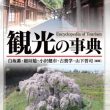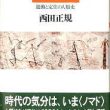Tourist & Tourism by Encyclopedia of Tourism Chief Editor Jafar Jafari
公開日:
:
最終更新日:2016/11/25
人流 観光 ツーリズム ツーリスト
Tourst
The term ‘tourist’ was invented as an extension of ‘tour’, which earlier had evolved to its modern sense of a trip for pleasure. While ‘tour’has long meant a circular trip, its modern sense – a pleasure trip – evolved only 270 years ago. Daniel Defoe`s book. A Tour Through The Whole Island of Grate Britain(1726), is an early sign of this modern meaning, and the book, an instant bestseller, helped promote it. Previously, motivations of travellers involved somber attitudes to scholarship, exploration, commerce and religion. As a pioneer of pleasure travel, Defoe retained interests in their subjects but imbued them with pleasure, which became extra motivation. Be cause of this new attitude he was regarded as slightly eccentric, certainly unusual. In Japan a near contemporary of Defoe, Basho, was another pioneer of pleasure travel; his book Narrow Road to the Deep North appeared in 1692. A generation after Defoe, the eccentricity became fashionable in Europe, for by 1745 the expression Grand Tour was widely used, referring to leisurely circuits of the Continent for high cultural purpose.
A Generation later, in the 1770s, Adam Smith formed an opinion that the cultural ideals had been sufficiently eroded by pleasurable priorities to justify a new word,’tourist’. Smith`s neologistic device,’tour-ist’,symbolised persons making a ritual of quick visits to cultural sites but spending most of their time seeking pleasure. Thus in its beginning, ‘tourist’ was pejorative. Today, while it still carries various senses of inferiority ( in form, style, class, standard, price, dependency and more) among many who use or hear it, those connotations are not universal.
Currently three sets of meanings of tourist can be identified, each serving a particular context. The three are popular ideals, technical definitions and heuristic meanings. Failure to discriminate clearly among the sets can lead to confusion. Dictionaries report common popular meanings, but cannot report all in this set. Different persons use varied concepts and perspectives for distinguishing tourist, so that what constitutes a boundary between tourists and non-tourists cannot be specified in a manner that suits everybody.
Technical definitions are used for statistical data. An unambiguous statement allows everybody responsible for collecting, processing and using data to know what is included. Because popular ideas of tourist are diverse and subjective, official statistics cannot leave the demarcation to opinion. Widely followed technical definitions for ‘international tourist’ have changed over the years, but the following is a current version: For statistical purposes the term ‘international tourist’ describes any person vising a country other than that in which they have their usual residence, but outside their usual environment, for a period not exceeding 12 months and exercise of activity remunerated from within the country visited. International visitors include ‘tourists’ (overnight visitors) who stay at least one night in a collective or private accommodation in the country visited and ‘same-day visitors’. (World Tourism Organization 1997:3)
This definition is much broader than many popular ideals, for it counts as tourists those making trips for many purposes, including vacation, holiday, business, pilgrimage, conference, visiting relatives, study and so on. This scope should be heeded when interpreting statistical data. However, technical definitions are not authoritative prescription which must be adopted for the next, third context.
Heuristic meanings help learning. Formal studies or research on tourists’ behaviour, and formal discussions or lectures, can be helped by a crafted description and ultimately a precise definition as to what is meant by ‘tourist’. Such statements help focus thinking and remove ambiguities. Since technical definitions usually embrace many trip purposes. They are inappropriate for detailed discussions of tourist behaviour. Consequently ,individual researchers should devise their own heuristic concepts, refined to definitions if precision is needed,to suit each project.
In that process,four criteria can be considered. First there is itinerary: domestic or international, or both. Second, minimum and maximum duration of trips can be indicated. Normally tourists are distinguished from day-trippers, for if the latter were regarded as tourists, studies of tourism would logically have be biased towards the special nature of day-tripping, which is a far larger phenomenon. A third criterion (not essential) is minimum distance traveled. A forth is distinctive behaviour,which can be indicated by saying that tourism revolves around leisure. Tourists` leisure involves recreational and/or creative experiences from features or characteristics of places visited. There is commonly called attractions. Their central elements are sights, sites, objects, events and other phenomena.
Once many publications referred to ‘the tourist’ in ways implying that all tourists behave similarly (‘Xanadu has much to offer the tourists’). This stereotype has been progressively abandoned. Diversity is now reflected in typologies, in acknowledgement of various purposes of trips, and in touristic categories such as adventure, cultural, pleasure, business, domestic and so on. Further diversity occurs in the degree to which different tourists depend on services and goods supplied by tourism industries. Highly dependent tourists are consumers relevant for business marketing, while independent or self-sufficient tourism occurs beyond or at the fringes of markets served by those industries. Meanwhile the complex and heterogeneous nature of tourists’ behavior can be explored using many social science and business disciplines or concepts, such as anthropology, behavior, anomie, attitude, escape, experience, fantasy, management, marketing, psychographics, pyschology, regression, self-actualisation and sociology.
Tourism
As the scope and range of topics covered this encyclopedia reveal, tourism is indeed a challenging multisectoral industry and a truly multidisciplinary field o study. To reveal and understand both its manifest and hidden dimensions, much has been written on this subject. While earlier studies through the 1960s mainly focused on its economic contributions, present efforts define and treat it as a whole, whether as an industry, a phenomenon, or both. To frame this comprehensive focus, during recent years holistic treatments and definitions have gained popularity. For example, tourism is defined as the study of man (the tourist) away from his usual habitat, of the touristic apparatus and networks responding to his various needs, and of the ordinary ( where the tourist is coming from) and non-ordinary (where the tourist goes to) words and their dialectic relationships. Such conceptualisations extend the frame beyond the earlier trade-oriented notions or definitions mostly devised to collected data and calculate tourist arrivals, departures, or expenditures. Significantly,it is this holistic view which accommodates a systemic study of tourism: all its parts, its interconnected structures and functions,as well as forms and forces relating to it. The purposefulness of the emerging landscape of knowledge, as demonstrated in this volume’s coverage and through new studies regularly published in now over forty research journals in this field, as well as other media, all point to the more scholarly horizons ahead, but without failing to recognise that it is tourism as an industryーwith its perceived and documented socioeconomic costs and benefits ーwhich has brought all this worldwide academic attention and popularity to the forefront.
関連記事
-

-
文化人類学で読み解く北朝鮮社会 伊藤亜人 公研 2017年10月号No.650
韓国人がなぜ、国内海外を含めてあれほど旅行をするのか考えていたが、一つの答えが見つかったような気がす
-

-
よそ者としての「tourist」の語感
http://www.bbc.com/news/world-asia-india-44312894
-

-
『観光の事典』朝倉書店
「観光の事典」に「観光政策と行政組織」等8項目の解説文を出筆させてもらっている。原稿を提出してか
-

-
読売新聞、朝日新聞記事に見る字句「ツーリズム」「観光」の用例
読売新聞の記事データベース「ヨミダス」及び朝日新聞の記事データベース「聞蔵Ⅱ」を活用して「ツーリスト
-

-
概念「「楽しみ」のための旅」と字句「観光」の遭遇 Encounter of the concept “Travel for pleasure” and the Japanese word “KANKO(観光)”(日本観光研究学会 2016年度秋期大会論文掲載予定原稿)
「「楽しみ」のための旅」概念を表現する字句が、いつごろから発生し、どのように変化していったかを、「「
-

-
動画で考える人流観光学講義(開志) 2023.11.27 将来の観光資源
◎ 科学技術の進展による観光資源の拡大 ◎ 宇宙旅行 自らの目で見た風景を表そうとすると、遠くを
-

-
人口減少の掛け声に対する違和感と 西田正規著『人類史のなかの定住革命』めも
多くの田舎が人口減少を唱える。本気で心配しているかは別として、政治問題にしている。しかし、人口減少と
-

-
Encounter of Japanese word“観光”and English word“tourist” ~ the birth and development of domestic tourism policy in Japan ~
1 Outbreak of the concept of movement of people
-

-
観光概論にみる字句「観光」の説明
有栖川図書館で観光の書籍を読む。大橋昭一氏の関係する書籍が開架式の棚に何冊かあり読む。 大橋著『
-

-
『旅程と費用概算』、『ツーリスト案内叢書』にみる字句「遊覧」「観光」
都立図書館で閲覧可能な「旅程と費用概算」及び「ツーリスト案内叢書」により、当時の字句「遊覧」「観光」
- PREV
- 『近代京都研究』から見る「遊覧」と「観光」に関するメモ
- NEXT
- 「厚生」省の誕生と国内「観光」政策
